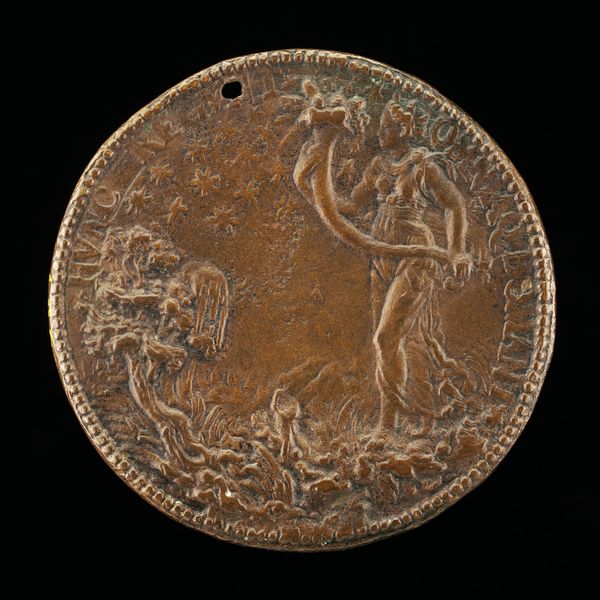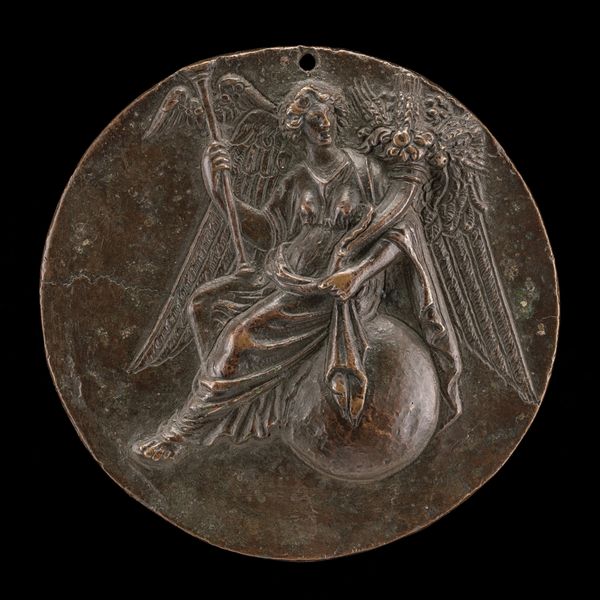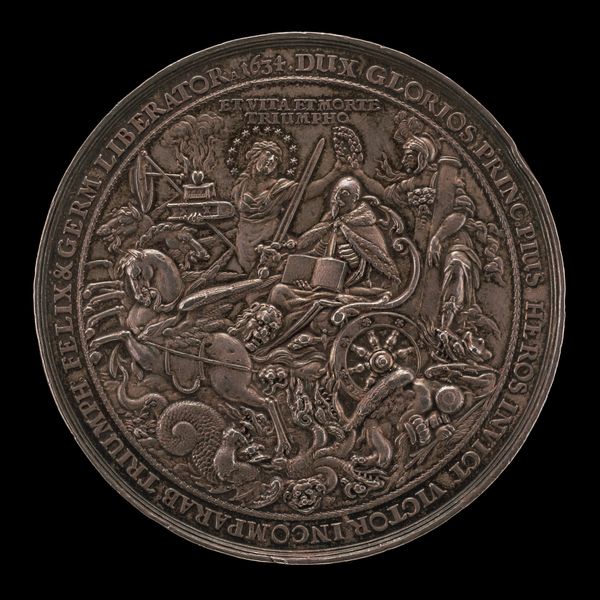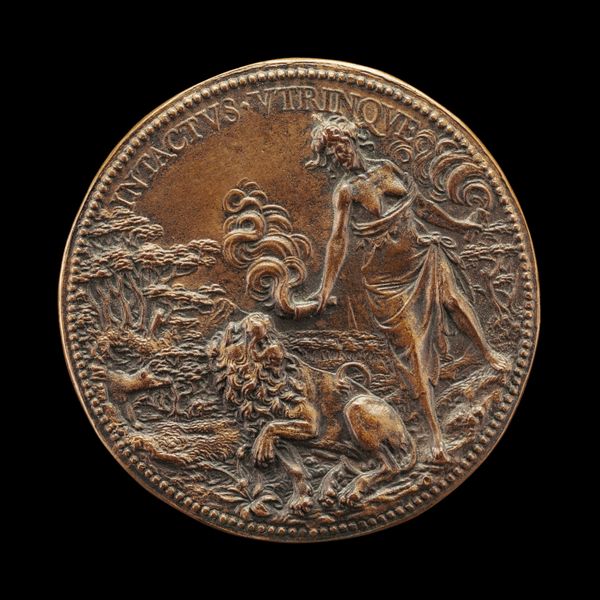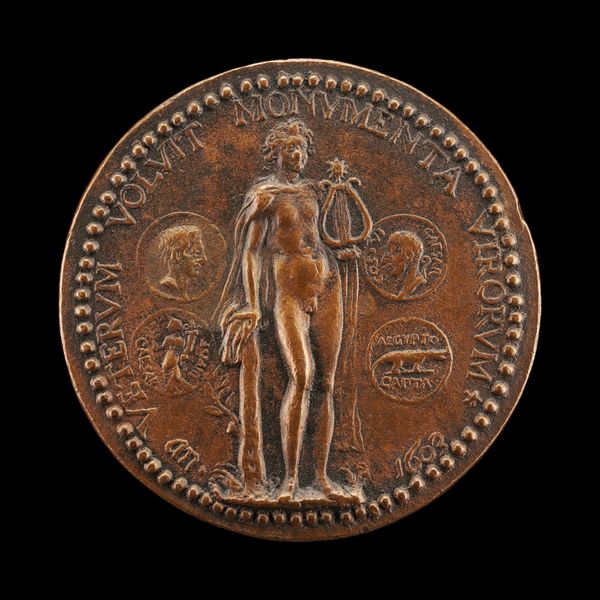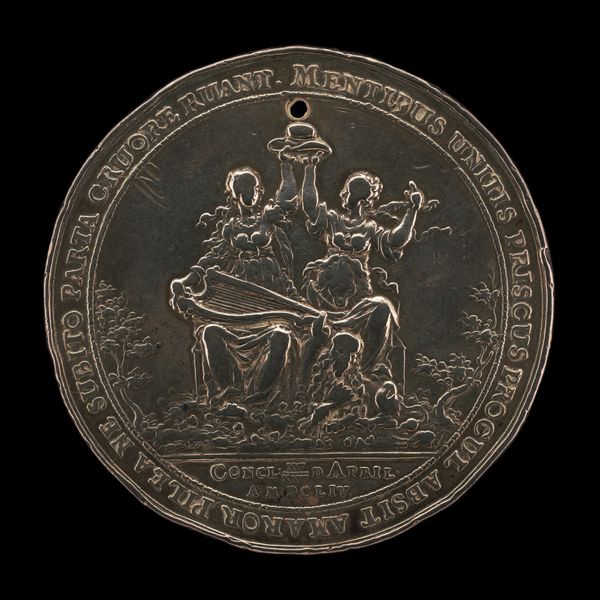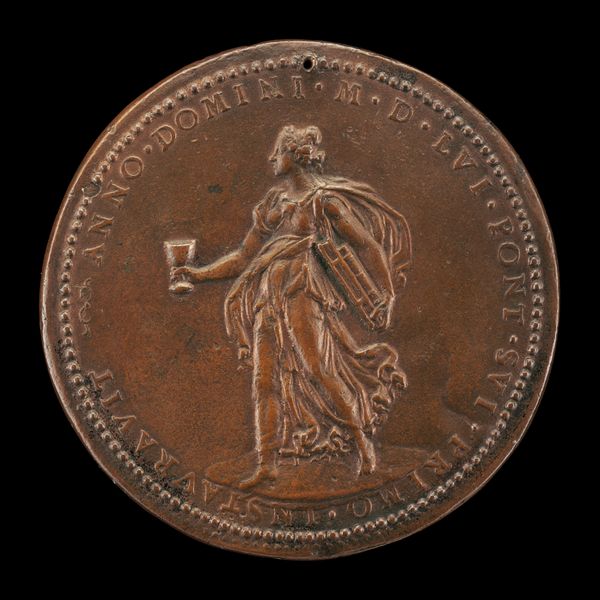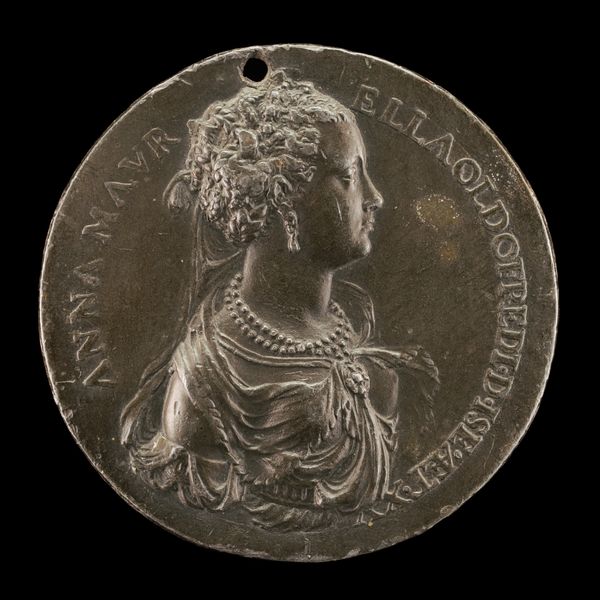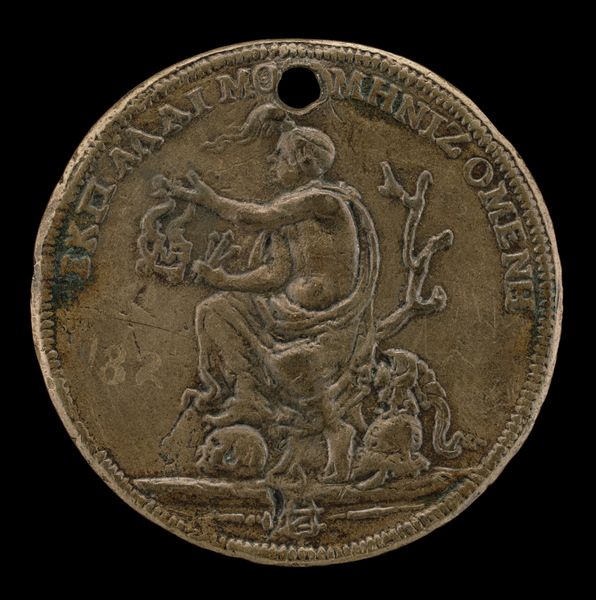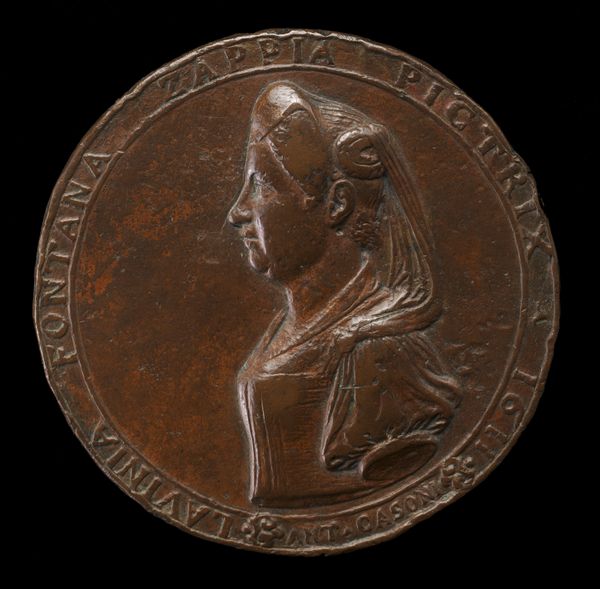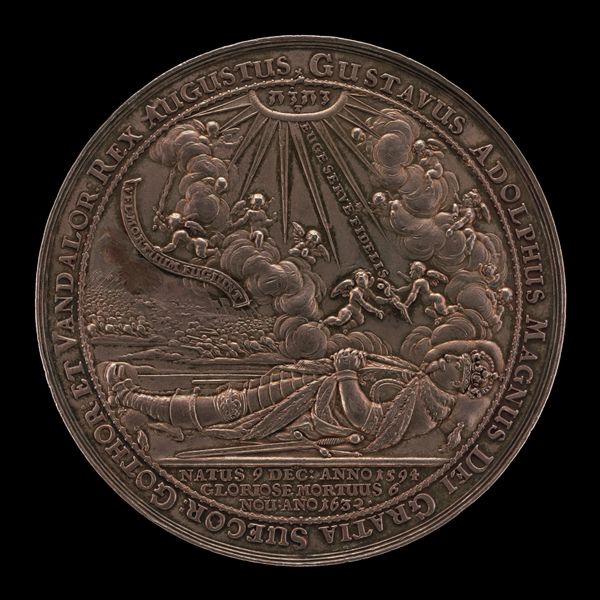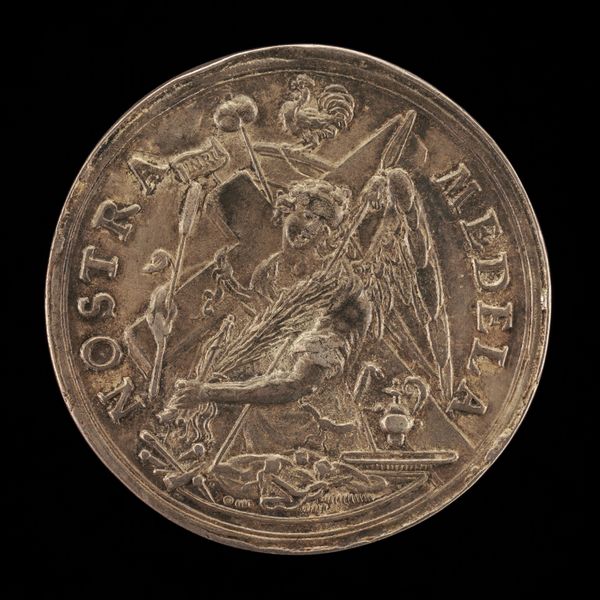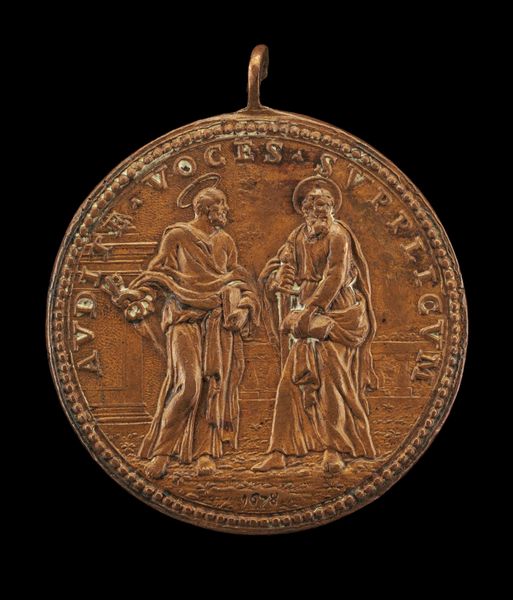![Arion Riding a Dolphin [reverse] by Giovanni Boldù](/_next/image?url=https%3A%2F%2Fd2w8kbdekdi1gv.cloudfront.net%2FeyJidWNrZXQiOiAiYXJ0ZXJhLWltYWdlcy1idWNrZXQiLCAia2V5IjogImFydHdvcmtzLzY0MjVjZmRkLTRiOTMtNDc2Ni04ZTlkLTY5MzJiNTU3Y2U1Zi82NDI1Y2ZkZC00YjkzLTQ3NjYtOGU5ZC02OTMyYjU1N2NlNWZfZnVsbC5qcGciLCAiZWRpdHMiOiB7InJlc2l6ZSI6IHsid2lkdGgiOiAxOTIwLCAiaGVpZ2h0IjogMTkyMCwgImZpdCI6ICJpbnNpZGUifX19&w=3840&q=75)
relief, bronze, sculpture
#
portrait
#
relief
#
bronze
#
figuration
#
11_renaissance
#
sculpting
#
sculpture
#
history-painting
#
italian-renaissance
Dimensions: overall (diameter): 7.21 cm (2 13/16 in.) gross weight: 97.73 gr (0.215 lb.) axis: 1:00
Copyright: National Gallery of Art: CC0 1.0
Editor: This is Giovanni Boldù’s bronze relief, "Arion Riding a Dolphin," created in 1457. I find it intriguing—so small, yet it tells this epic story! What do you make of it? Curator: It's more than a story; it's a miniature opera cast in bronze! Boldù's choice of medium gives the myth of Arion a weighty permanence, doesn't it? The scene, Arion's rescue, feels like a snapshot lifted straight from the waves of legend. There’s something touchingly human about the figure of Arion himself. How do you interpret the look on his face? Editor: A mix of relief and perhaps slight bewilderment, like, “Did that really just happen?” I'm also curious about the inscription around the edge. What does it signify? Curator: Ah, the inscription! It proclaims something along the lines of "Virtue is the mother of all things.” This sentiment was quintessential Renaissance, wouldn't you agree? They sought to connect personal excellence with grand cosmic order! Editor: It adds a layer, connecting the myth to Renaissance ideals. It's like the piece wants to teach a lesson about virtue. Curator: Indeed! Boldù gives us not just a depiction, but a moral compass—beautifully packaged, of course. Isn’t it marvelous how much depth and symbolism can be captured in such a small format? It makes you wonder what virtues we might choose to immortalize in bronze today, eh? Editor: Absolutely, I never thought a small Renaissance relief could hold so much meaning! It really gives you a new appreciation for miniature artworks and how history informs art.
Comments
No comments
Be the first to comment and join the conversation on the ultimate creative platform.
